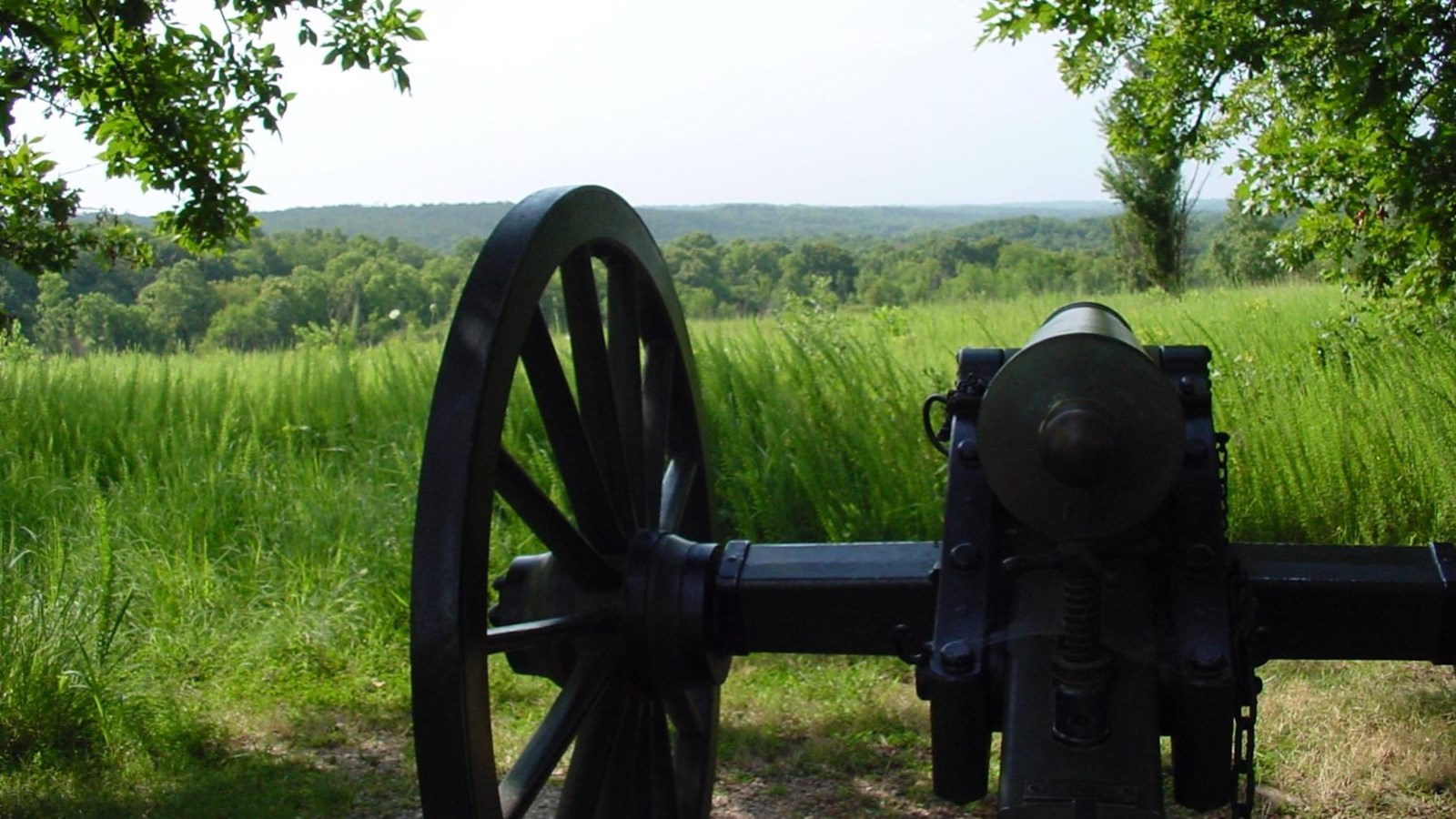Last updated: November 22, 2021
Place
Bloody Hill

NPS
Historical/Interpretive Information/Exhibits, Information, Parking - Auto, Parking - Bus/RV, Scenic View/Photo Spot, Trailhead
A ¾-mile walking trail across Bloody Hill includes points of interest such as the 1928 “Lyon Marker” (the only monument on the battlefield), and a natural sinkhole that served as a temporary mass grave for Union soldiers killed in the fighting.
“Come on, my brave boys, I will lead you! Forward!” – Union Brigadier General Nathaniel Lyon
On the morning of August 10, 1861, Union and Southern forces met at Wilson’s Creek in the second major battle of the Civil War. Called the “Bull Run of the West,” some of the battle’s most pivotal moments occurred on high ground later christened “Bloody Hill.”
Around 5:00 am on August 10, 1861, fighting started. Troops under Union Brigadier General Nathanial Lyon moved to an area of high ground that would earn a new name that day – Bloody Hill. Over the next six hours, the battle’s most intense and savage combat took place here as Lyon’s men braved artillery fire from the Pulaski Arkansas Battery and faced several Southern attacks.
Fighting intensified around 9:00 a.m., when Major General Sterling Price and his pro-secessionist Missouri State Guard began a second assault. Southern troops formed three or four ranks deep and fired while lying down, kneeling, and standing. For more than an hour, they faced Lyon’s 3,500 men and 10 cannon at close range. As black powder smoke hung thick, men fired blindly. The blistering August heat took its own toll and men fell to heat exhaustion as well as bullets and cannon fire.
As the battle raged, Lyon remarked to his chief of staff, Major John Schofield, “It is as I expected. Major, I am afraid the day is lost.” Schofield replied, “No, General; let us try it again!” Spurred on by Schofield’s enthusiasm, Lyon rode toward the center of the fighting. He began repositioning his troops. Waving his hat in the air, Lyon reportedly cried, “Come on, my brave boys, I will lead you! Forward!”
Just then the Confederates let loose a volley of fire. Lyon fell from his horse with an instantly fatal wound in the chest. With his death, Lyon became the first Union general killed in combat during the Civil War.
The third and largest Southern assault against Bloody Hill began after Lyon's death, but ended in failure as the Southerners fell back. Union Major Samuel Sturgis, in command after Lyon’s death, ordered his troops to retreat because of heavy casualties, dwindling ammunition and no relief in sight from other Union forces. The Southerners, disorganized and also low on ammunition, did not to pursue. The battle of Wilson’s Creek was over, a tactical victory for the South.
Lyon’s army lost nearly a quarter of its strength, while 12 percent of the Southern army became casualties. More than 535 dead and 2,000 wounded or missing soldiers littered the field. It had been, as one Southern participant recalled, “a mighty mean-fowt fight.” Missouri remained under Union control for the remainder of the conflict.
At Bloody Hill, you will observe a battlefield that has changed very little over time, other than the growth of trees and other vegetation that obscures some of the views as they were in 1861. A ¾-mile walking trail across Bloody Hill includes points of interest such as the 1928 “Lyon Marker” (the only monument on the battlefield), and a natural sinkhole that served as a temporary mass grave for Union soldiers killed in the fighting.
The southern slope of Bloody Hill preserves a wide variety of native plants in a section of rare “remnant prairie,” one of the few such bits left in Missouri.
